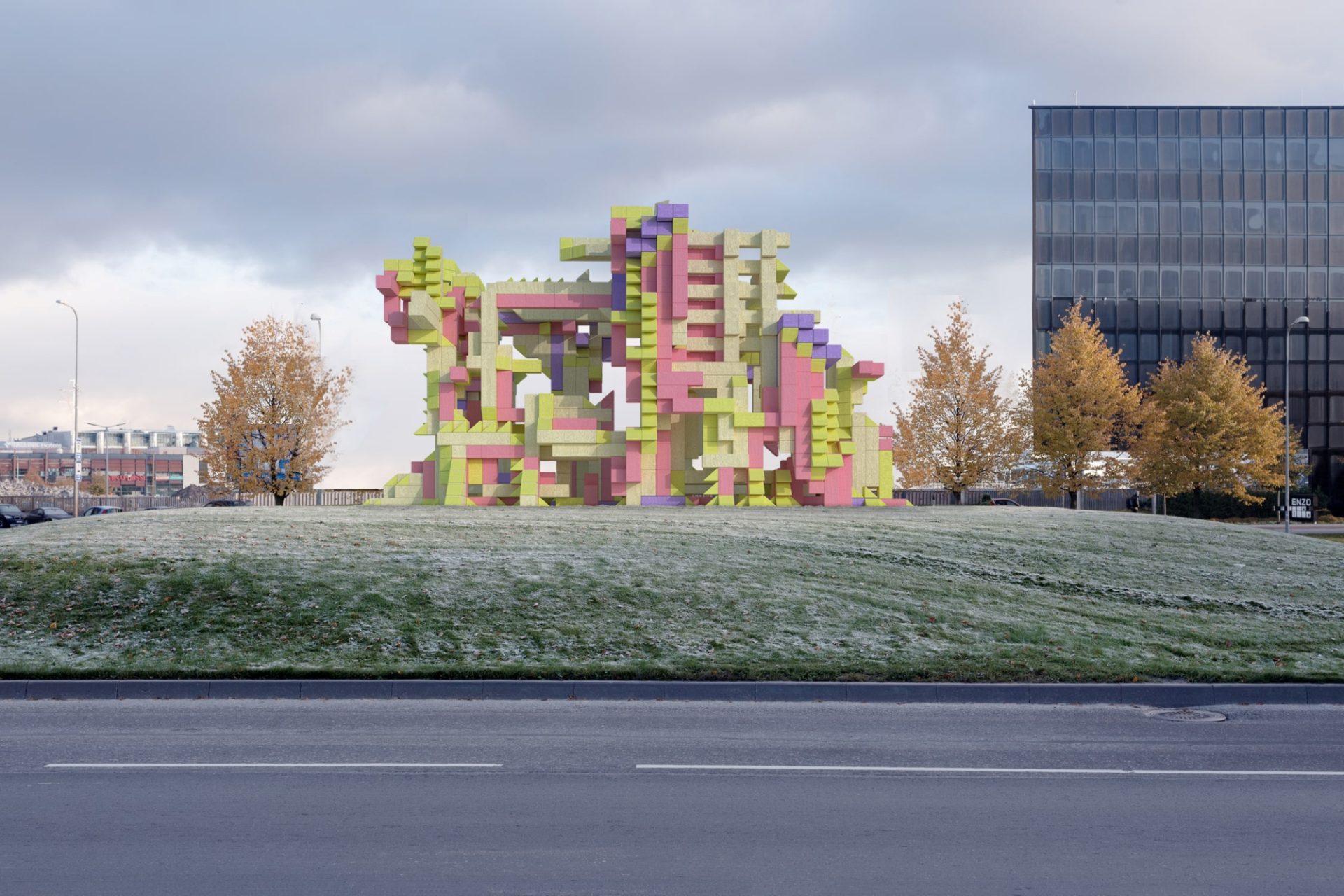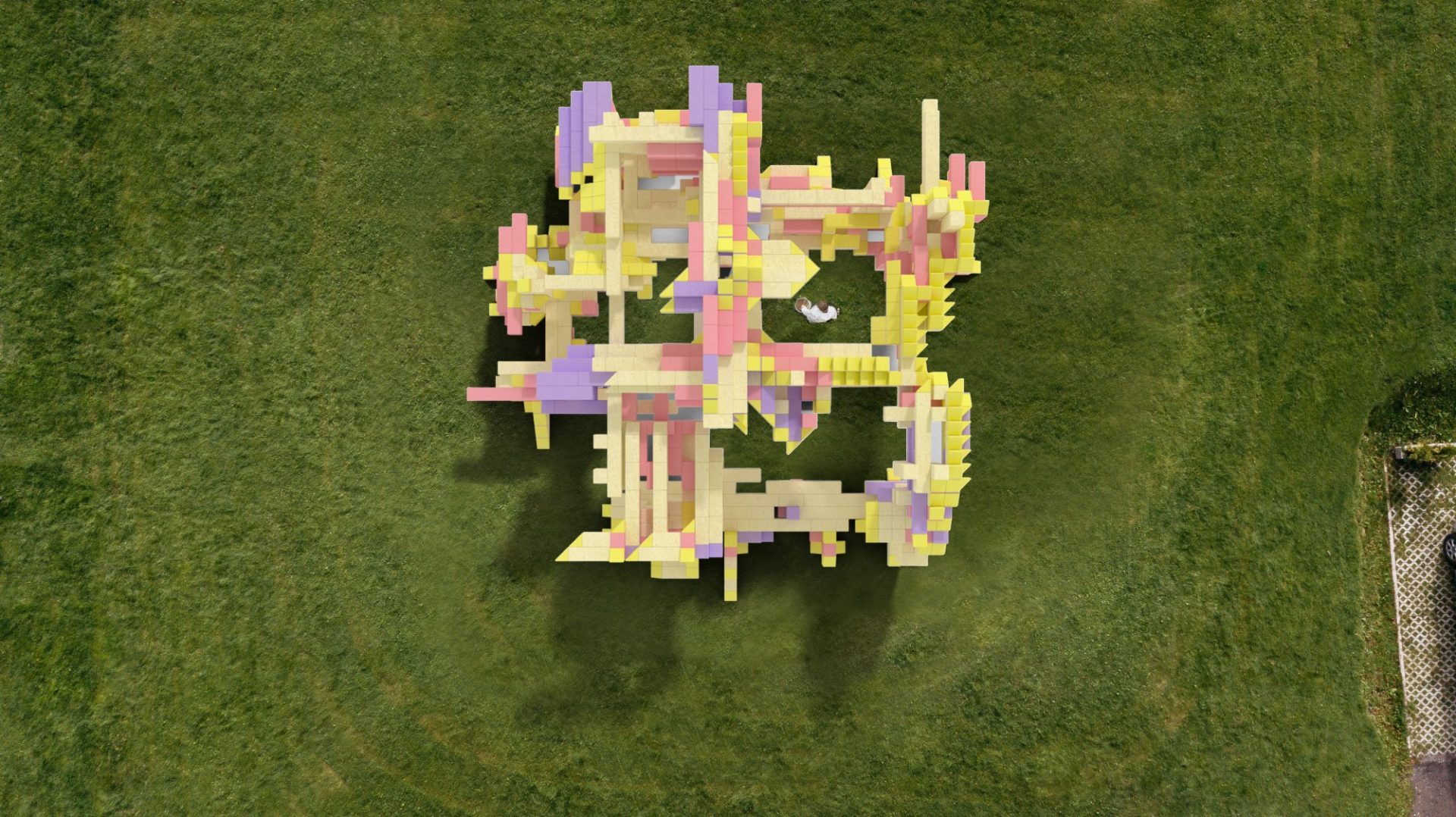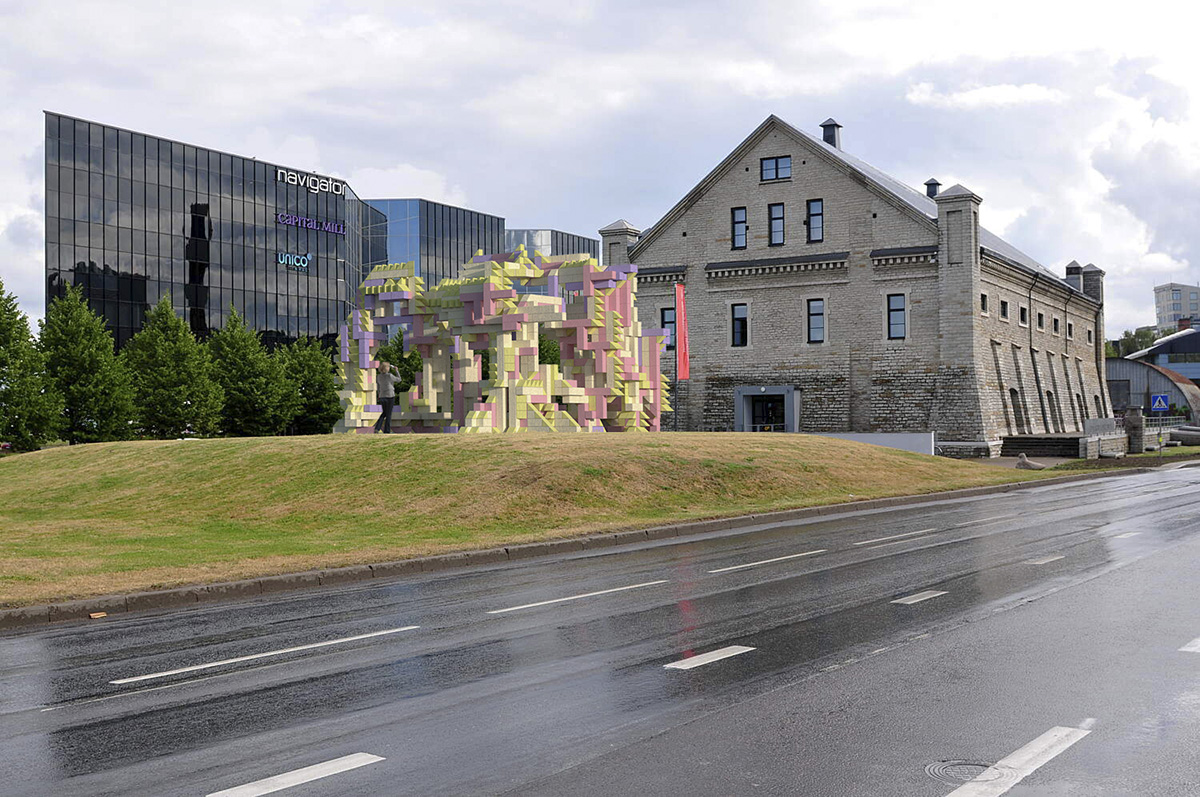IHEARTBLOB Designs a Growing Blockchain Installation at Tallinn
The Tallinn Architecture Biennale (TAB) in Estonia, to be held from 7 September 2022, is an international architecture and urban planning festival with a diverse programme that promotes architectural culture and it will feature an installation that grows over time.
 TAB encourages synergy between Estonian and foreign architects as well as between architects and the general public by way of creating contacts and exchanging ideas. The core programme consists of five main events: a Curatorial Exhibition, a Symposium and the Tallinn Vision Competition, all curated by TAB Head Curator, an International Architecture Schools’ Exhibition and the Installation Programme. Tallinn Architecture Biennale is organised by the Estonian Centre for Architecture.
TAB encourages synergy between Estonian and foreign architects as well as between architects and the general public by way of creating contacts and exchanging ideas. The core programme consists of five main events: a Curatorial Exhibition, a Symposium and the Tallinn Vision Competition, all curated by TAB Head Curator, an International Architecture Schools’ Exhibition and the Installation Programme. Tallinn Architecture Biennale is organised by the Estonian Centre for Architecture.
TAB 2022 is entitled “Edible; Or, The Architecture of Metabolism”, which transfers the metabolism and experiential aptitudes of the natural world to the domain of cities and buildings. The curators of TAB 2022 are Lydia Kallipoliti and Areti Markopoulou in collaboration with Co-Curator Ivan Sergejev. Lydia Kallipoliti is an architect, engineer and scholar and Assistant Professor at the Irwin S. Chanin School of Architecture at the Cooper Union in New York. Areti Markopoulou is a PhD architect, researcher and urban technologist working at the intersection between architecture and digital technologies.
The aim of the Installation Competition is to challenge emerging architectural talents to design an experimental timber installation in front of the Museum of Estonian Architecture, in the heart of Tallinn. The project focuses on the concept of slowness, aligning with TAB 2022’s main theme: “Edible. Or, the Architecture of Metabolism”.
IHEARTBLOB completely re-thinks the requirements of the pavilion by presenting a new decentralised and systematic approach towards architectural design, fabrication and funding in which the community are both designers and investors contributing to an emergent structure that evolves and grows over time.
In their proposal, the winning studio set forth a new role for the architect – no longer the ‘Master Builder’ of The Fountainhead – but rather one of a system designer who weaves together innovative technologies to empower communities and enable local craftsmanship through the usage of blockchain, specifically the emergence of Non-Fungible Token (“NFT”), and Artificial Intelligence (“AI”).
This project would be the first-ever blockchain-funded architecture initiative. It would serve as a test for the new decentralised architectural design model, which could generate works that are more reflective of the community and environmental awareness. The outcomes are physical-digital hybrids that balance ‘slower’ constantly evolving physical components with real-time reactive digital updates.
The integration of such technologies enables the design of a pavilion that evolves and grows both physically and digitally. Furthermore, IHEARTBLOB, rather than designing architecture elements themselves, have built an NFT generative tool in which individuals can design and “mint” – the process of creating and authenticating digital ownership – their own objects. As part of their NFT generative tool, a parametric setup is provided for users to design within constraints (e.g. grid systems, predefined interlocking components, timber materiality, etc.). The initial minting fee can therefore be calculated to cover the budgeted costs of material and overheads (labour, fabrication, etc.) and a physical object manifest from a digital design. In essence, every NFT minted by their tool funds a physical twin that is used in the pavilion. The digital objects can then be sold, by the owners, on secondary marketplaces as a way for the community designers to generate returns on their design/investment.
The result is a pavilion composed of unique parts each with different designers and owners, and ultimately reflective of broader community demand and aesthetic sentiment.
The application for designing a piece will go online from 1 May and the platform will be open until 1 July, when construction is set to begin. The installation will be built in July and August 2022 in the lively pedestrian green area facing the Museum of Estonian Architecture and will open to the public during the. The structure will remain in place until the next edition of the event in 2024.
All the projects by Stage II participants will be displayed at the TAB Installation Programme exhibition, and published on the TAB 2022 website and in the catalogue.






